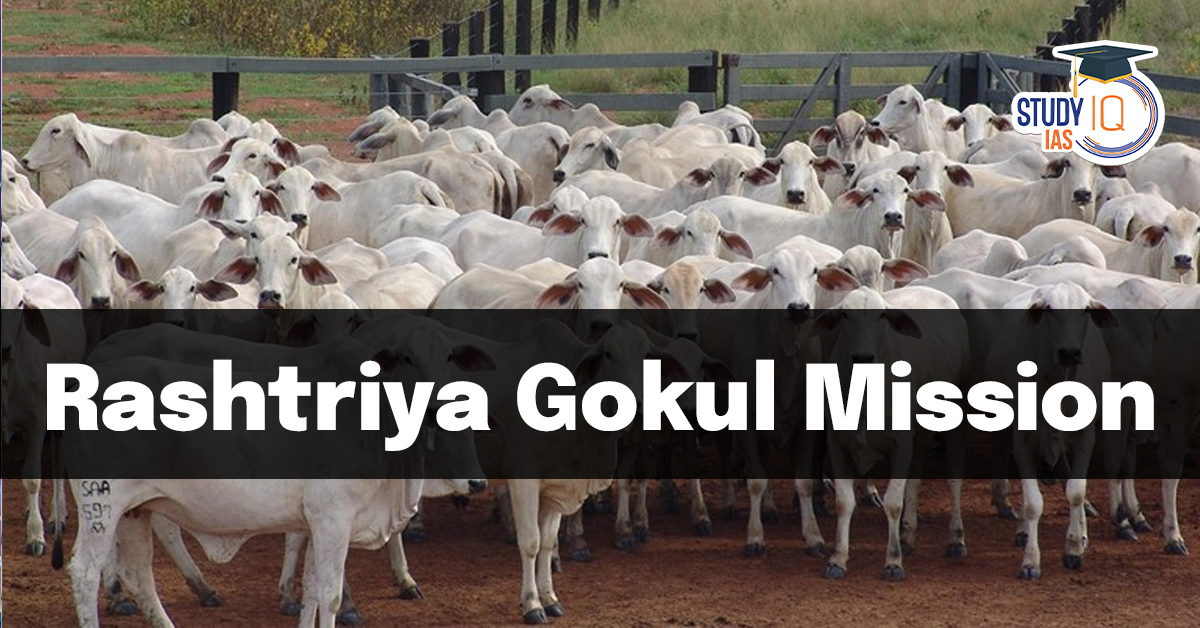Table of Contents
Context: The implementation of the Rashtriya Gokul Mission and other initiatives by the Government of India have resulted in a significant 63.5% increase in milk production over the past decade.
About Rashtriya Gokul Mission (RGM)
- Rashtriya Gokul Mission (RGM) was launched in December 2014 under the National Programme for Bovine Breeding and Dairy Development (NPBBDD).
- It focuses on scientific conservation, breed improvement and productivity enhancement of indigenous bovine breeds.
- Implementing Agency: Department of Animal Husbandry & Dairying (DAHD), Ministry of Fisheries, Animal Husbandry & Dairying.
- It supports States and Union Territories in infrastructure development for indigenous cattle breeding.
Key Initiatives Under Rashtriya Gokul Mission
Strengthening of Semen Stations
- Objective: Improve the quality and quantity of semen production for cattle breeding.
- 47 semen stations across India have been strengthened and modernized with RGM funding.
Sex-Sorted Semen Production Facility
- Sex-sorted semen technology ensures that 90% of calves born are female, improving productivity.
- 67 lakh doses of sex-sorted semen have been produced under RGM.
Establishment of IVF Labs
- Bovine IVF technology is being used for the first time in India to conserve and develop indigenous breeds.
- 22 IVF laboratories have been set up across India.
Multi-purpose Artificial Insemination Technicians in Rural India (MAITRI)
- 38,736 MAITRIs trained to provide artificial insemination (AI) services at farmers’ doorsteps.
National Kamdhenu Breeding Centers (NKBCs)
- Two National Kamdhenu Breeding Centers serve as germplasm repositories for Indigenous breeds:
- The centres are located in Itarsi (Madhya Pradesh) and Nellore (Andhra Pradesh).
Launch of Indigenous Genomic Chip
- A genomic chip has been developed under RGM to identify high-genetic-merit bulls for breeding.
| Facts |
|


 Coastal Resilient Coastal Fishermen Vill...
Coastal Resilient Coastal Fishermen Vill...
 National Pest Surveillance System (NPSS)
National Pest Surveillance System (NPSS)
 India launched Operation Brahma for Assi...
India launched Operation Brahma for Assi...





















